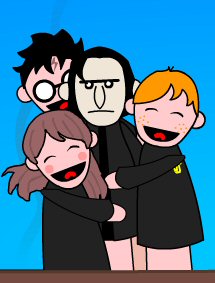1. The font that is used is a dark font, which gives the ad a serious undertone. This may create a solemn effect, and stresses the importance of the issue. The ad only contains one subject and its shadow right in the centre of the ad. This provides the intended focal point, and the audience would be drawn to the subject rather than the white plain background. This focal point serves to emphasise the message of the ad, stressing the juxtapositions of the sporty girl, and her distressed ‘impregnated’ shadow. I find these visual techniques effective, as it was able to draw an emotional response from me. The ad was presented effectively enough that I was able to focus on the centre picture (what the creators intended).
2. The statistic compliments the argument that a high percentage of teenagers are liable to experiment with sex if they do not participate in extra curricular activities. This may mean that, teens without any productive past time hobbies, are more likely to keep themselves occupied by ‘experimenting’ with adult or wrongful acts prematurely.
3. The values that the ad appeals to the traditional times where back then, children are ‘innocent,’ whilst compared to today, children are growing up ‘way too fast,’ experimenting with drugs and sex at an earlier age. The ad effectively chose a white blond girl playing basketball to highlight that, even ‘perfect’ and ‘beautiful’ girls are being affected by this phenomenon. This girl seems to depict a ‘perfect’ role model, sporty, beautiful and talented. However, the juxtaposition of her pregnant shadow in the background causes concern and horror as the audience would realise that, role models such as she were affected, than other girls would follow suit.
In relation to audience-based reasons, this advertisement may target and be persuasive to teenagers themselves, as it shows the horrific result of what may happen if they did not have a productive past time. Some teenagers may see how their futures and body will be affected through the depressed shadow of the girl.
4. If teenagers are not participating in extra curricular activities, they may result in going home and subjecting themselves to the wonderful world of television. Due to the increase in crime and sex related movies, children may be spurred to go and experiment what they see on television themselves. Thus, due to the decreased participation in extra curricular activities induces increased television time. Television time therefore is the cause for the increased teen parent rate. Thereby, it can be argued that decreased after school activities and teen pregnancy are bound by a correlation, not a cause and effect relationship.
